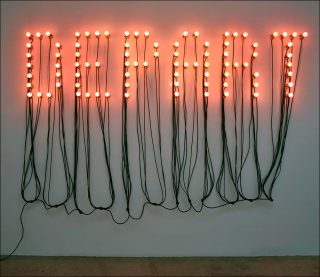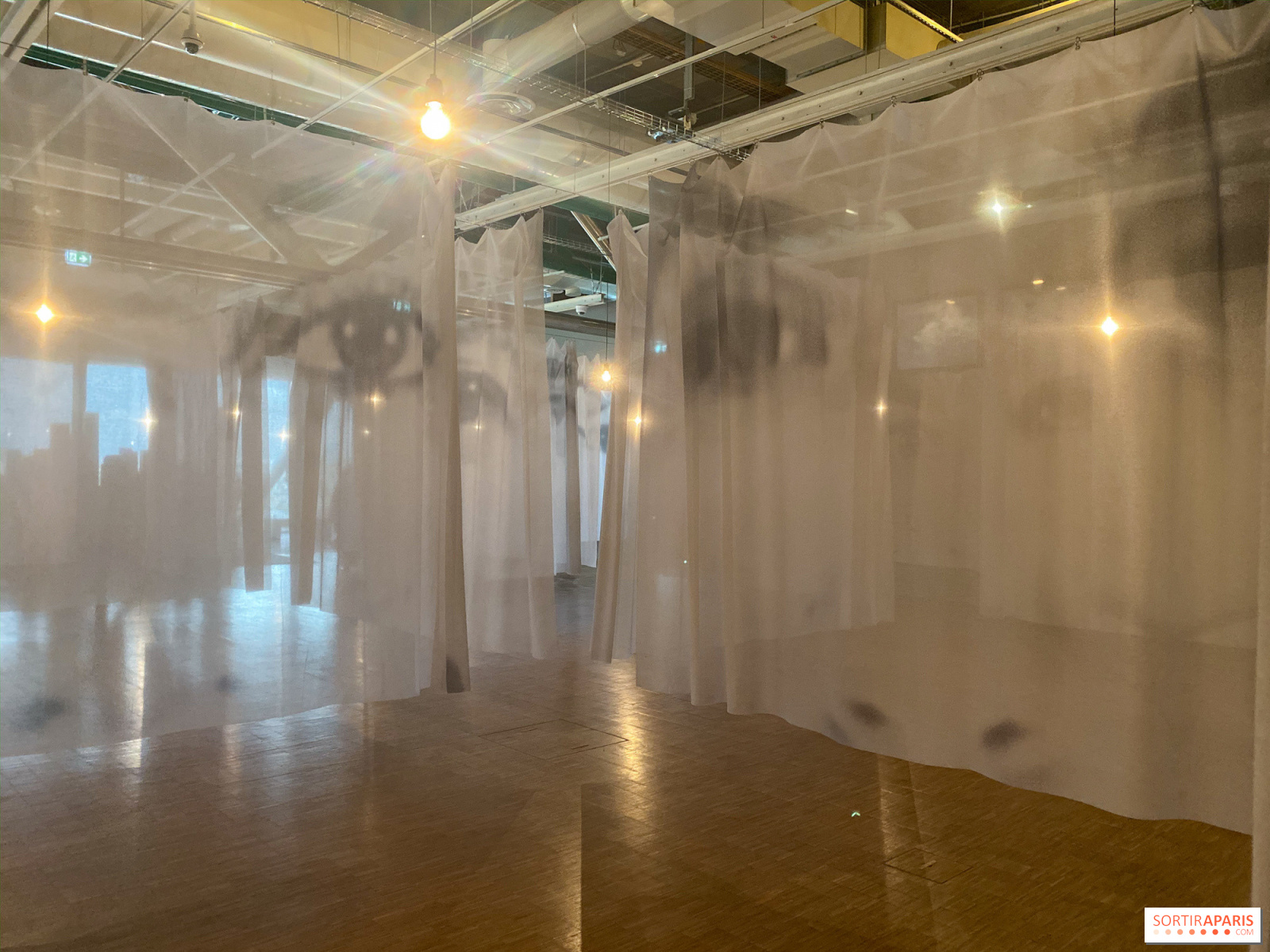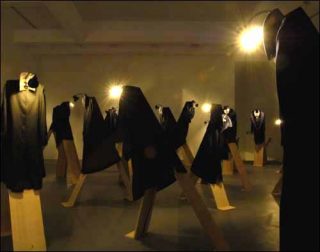 |
| Christian Boltanski, Depart, Life in the Making |
 |
| Christian Boltanski, Les Regards, 2011 |
 |
| Christian Boltanski, Autel Chases, 1987 |
 |
| Christian Boltanski, Prendre la Parole, 2005 |
Or in the row upon row of columns made from rusted steel boxes, each with a small photograph on its front, we cannot help but imagine that each box contains the ashes of the person depicted or naming the box. Or perhaps their valuables have been placed in the box, as if in a vault, for safekeeping. Either way, there is no suggestion that anyone is coming back to collect their belongings.
 |
| Christian Boltanski, Les Registres du Grand-Hornu 1997 |

Boltanski grew up with a father who, as a Russian Jew, had escaped deportation by hiding underneath the floorboards for over a year. The profound effect this had on Boltanski's father is potentially taken up throughout the son's art across decades. The icons and symbols of the death camps are everywhere recognizeable, even if they are not present, in the works: piles of clothes, great numbers of blurred, anonymous faces with blackened-out eyes in photographs printed on flimsy cloths, black mirrors and veils, as well as sound installations that evoke practices of witnessing death and trauma. Of course, the exhibition and the museum are now closed in keeping with the government shutdown. However, should further reiterations of Life in the Making be staged elsewhere, Boltanski's work might just be seen as an omen for the end of the world that appears to be approaching through the silent city streets of our time.
No comments:
Post a Comment